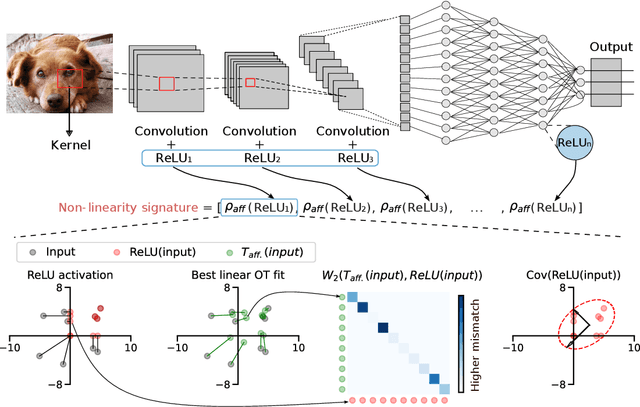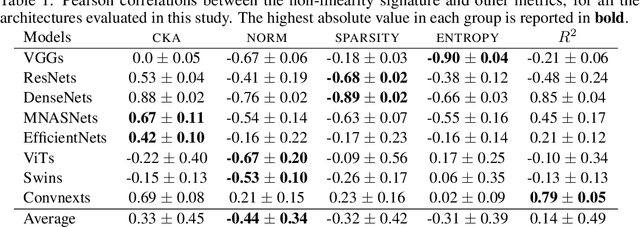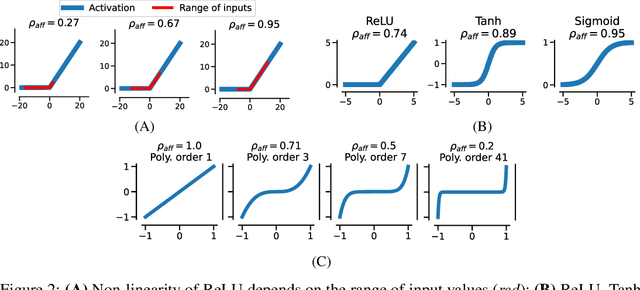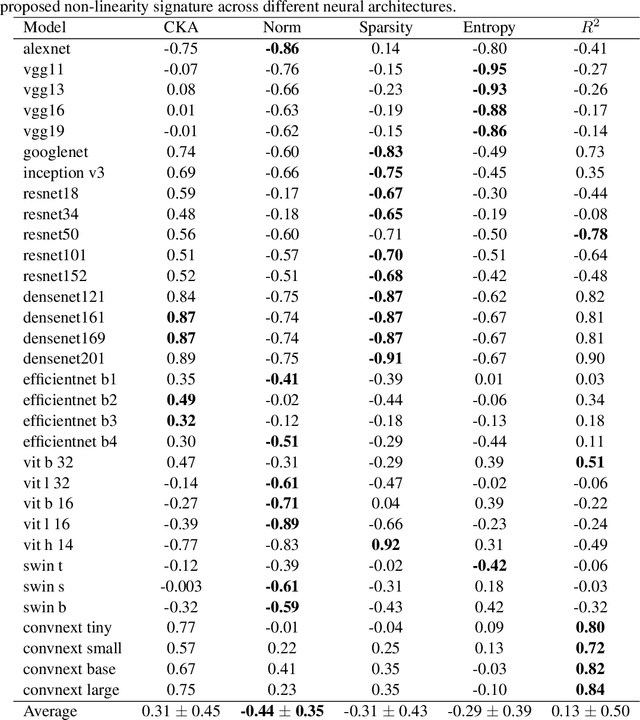Quentin Bouniot
Time Series Representations for Classification Lie Hidden in Pretrained Vision Transformers
Jun 10, 2025Abstract:Time series classification is a fundamental task in healthcare and industry, yet the development of time series foundation models (TSFMs) remains limited by the scarcity of publicly available time series datasets. In this work, we propose Time Vision Transformer (TiViT), a framework that converts time series into images to leverage the representational power of frozen Vision Transformers (ViTs) pretrained on large-scale image datasets. First, we theoretically motivate our approach by analyzing the 2D patching of ViTs for time series, showing that it can increase the number of label-relevant tokens and reduce the sample complexity. Second, we empirically demonstrate that TiViT achieves state-of-the-art performance on standard time series classification benchmarks by utilizing the hidden representations of large OpenCLIP models. We explore the structure of TiViT representations and find that intermediate layers with high intrinsic dimension are the most effective for time series classification. Finally, we assess the alignment between TiViT and TSFM representation spaces and identify a strong complementarity, with further performance gains achieved by combining their features. Our findings reveal yet another direction for reusing vision representations in a non-visual domain.
Sparse Autoencoders Learn Monosemantic Features in Vision-Language Models
Apr 03, 2025Abstract:Sparse Autoencoders (SAEs) have recently been shown to enhance interpretability and steerability in Large Language Models (LLMs). In this work, we extend the application of SAEs to Vision-Language Models (VLMs), such as CLIP, and introduce a comprehensive framework for evaluating monosemanticity in vision representations. Our experimental results reveal that SAEs trained on VLMs significantly enhance the monosemanticity of individual neurons while also exhibiting hierarchical representations that align well with expert-defined structures (e.g., iNaturalist taxonomy). Most notably, we demonstrate that applying SAEs to intervene on a CLIP vision encoder, directly steer output from multimodal LLMs (e.g., LLaVA) without any modifications to the underlying model. These findings emphasize the practicality and efficacy of SAEs as an unsupervised approach for enhancing both the interpretability and control of VLMs.
Restyling Unsupervised Concept Based Interpretable Networks with Generative Models
Jul 01, 2024



Abstract:Developing inherently interpretable models for prediction has gained prominence in recent years. A subclass of these models, wherein the interpretable network relies on learning high-level concepts, are valued because of closeness of concept representations to human communication. However, the visualization and understanding of the learnt unsupervised dictionary of concepts encounters major limitations, specially for large-scale images. We propose here a novel method that relies on mapping the concept features to the latent space of a pretrained generative model. The use of a generative model enables high quality visualization, and naturally lays out an intuitive and interactive procedure for better interpretation of the learnt concepts. Furthermore, leveraging pretrained generative models has the additional advantage of making the training of the system more efficient. We quantitatively ascertain the efficacy of our method in terms of accuracy of the interpretable prediction network, fidelity of reconstruction, as well as faithfulness and consistency of learnt concepts. The experiments are conducted on multiple image recognition benchmarks for large-scale images. Project page available at https://jayneelparekh.github.io/VisCoIN_project_page/
Towards Few-Annotation Learning in Computer Vision: Application to Image Classification and Object Detection tasks
Nov 08, 2023



Abstract:In this thesis, we develop theoretical, algorithmic and experimental contributions for Machine Learning with limited labels, and more specifically for the tasks of Image Classification and Object Detection in Computer Vision. In a first contribution, we are interested in bridging the gap between theory and practice for popular Meta-Learning algorithms used in Few-Shot Classification. We make connections to Multi-Task Representation Learning, which benefits from solid theoretical foundations, to verify the best conditions for a more efficient meta-learning. Then, to leverage unlabeled data when training object detectors based on the Transformer architecture, we propose both an unsupervised pretraining and a semi-supervised learning method in two other separate contributions. For pretraining, we improve Contrastive Learning for object detectors by introducing the localization information. Finally, our semi-supervised method is the first tailored to transformer-based detectors.
Tailoring Mixup to Data using Kernel Warping functions
Nov 02, 2023



Abstract:Data augmentation is an essential building block for learning efficient deep learning models. Among all augmentation techniques proposed so far, linear interpolation of training data points, also called mixup, has found to be effective for a large panel of applications. While the majority of works have focused on selecting the right points to mix, or applying complex non-linear interpolation, we are interested in mixing similar points more frequently and strongly than less similar ones. To this end, we propose to dynamically change the underlying distribution of interpolation coefficients through warping functions, depending on the similarity between data points to combine. We define an efficient and flexible framework to do so without losing in diversity. We provide extensive experiments for classification and regression tasks, showing that our proposed method improves both performance and calibration of models. Code available in https://github.com/ENSTA-U2IS/torch-uncertainty
Towards Few-Annotation Learning for Object Detection: Are Transformer-based Models More Efficient ?
Oct 30, 2023Abstract:For specialized and dense downstream tasks such as object detection, labeling data requires expertise and can be very expensive, making few-shot and semi-supervised models much more attractive alternatives. While in the few-shot setup we observe that transformer-based object detectors perform better than convolution-based two-stage models for a similar amount of parameters, they are not as effective when used with recent approaches in the semi-supervised setting. In this paper, we propose a semi-supervised method tailored for the current state-of-the-art object detector Deformable DETR in the few-annotation learning setup using a student-teacher architecture, which avoids relying on a sensitive post-processing of the pseudo-labels generated by the teacher model. We evaluate our method on the semi-supervised object detection benchmarks COCO and Pascal VOC, and it outperforms previous methods, especially when annotations are scarce. We believe that our contributions open new possibilities to adapt similar object detection methods in this setup as well.
Proposal-Contrastive Pretraining for Object Detection from Fewer Data
Oct 25, 2023Abstract:The use of pretrained deep neural networks represents an attractive way to achieve strong results with few data available. When specialized in dense problems such as object detection, learning local rather than global information in images has proven to be more efficient. However, for unsupervised pretraining, the popular contrastive learning requires a large batch size and, therefore, a lot of resources. To address this problem, we are interested in transformer-based object detectors that have recently gained traction in the community with good performance and with the particularity of generating many diverse object proposals. In this work, we present Proposal Selection Contrast (ProSeCo), a novel unsupervised overall pretraining approach that leverages this property. ProSeCo uses the large number of object proposals generated by the detector for contrastive learning, which allows the use of a smaller batch size, combined with object-level features to learn local information in the images. To improve the effectiveness of the contrastive loss, we introduce the object location information in the selection of positive examples to take into account multiple overlapping object proposals. When reusing pretrained backbone, we advocate for consistency in learning local information between the backbone and the detection head. We show that our method outperforms state of the art in unsupervised pretraining for object detection on standard and novel benchmarks in learning with fewer data.
Understanding deep neural networks through the lens of their non-linearity
Oct 17, 2023



Abstract:The remarkable success of deep neural networks (DNN) is often attributed to their high expressive power and their ability to approximate functions of arbitrary complexity. Indeed, DNNs are highly non-linear models, and activation functions introduced into them are largely responsible for this. While many works studied the expressive power of DNNs through the lens of their approximation capabilities, quantifying the non-linearity of DNNs or of individual activation functions remains an open problem. In this paper, we propose the first theoretically sound solution to track non-linearity propagation in deep neural networks with a specific focus on computer vision applications. Our proposed affinity score allows us to gain insights into the inner workings of a wide range of different architectures and learning paradigms. We provide extensive experimental results that highlight the practical utility of the proposed affinity score and its potential for long-reaching applications.
The Robust Semantic Segmentation UNCV2023 Challenge Results
Sep 27, 2023



Abstract:This paper outlines the winning solutions employed in addressing the MUAD uncertainty quantification challenge held at ICCV 2023. The challenge was centered around semantic segmentation in urban environments, with a particular focus on natural adversarial scenarios. The report presents the results of 19 submitted entries, with numerous techniques drawing inspiration from cutting-edge uncertainty quantification methodologies presented at prominent conferences in the fields of computer vision and machine learning and journals over the past few years. Within this document, the challenge is introduced, shedding light on its purpose and objectives, which primarily revolved around enhancing the robustness of semantic segmentation in urban scenes under varying natural adversarial conditions. The report then delves into the top-performing solutions. Moreover, the document aims to provide a comprehensive overview of the diverse solutions deployed by all participants. By doing so, it seeks to offer readers a deeper insight into the array of strategies that can be leveraged to effectively handle the inherent uncertainties associated with autonomous driving and semantic segmentation, especially within urban environments.
Optimal Transport as a Defense Against Adversarial Attacks
Feb 05, 2021



Abstract:Deep learning classifiers are now known to have flaws in the representations of their class. Adversarial attacks can find a human-imperceptible perturbation for a given image that will mislead a trained model. The most effective methods to defend against such attacks trains on generated adversarial examples to learn their distribution. Previous work aimed to align original and adversarial image representations in the same way as domain adaptation to improve robustness. Yet, they partially align the representations using approaches that do not reflect the geometry of space and distribution. In addition, it is difficult to accurately compare robustness between defended models. Until now, they have been evaluated using a fixed perturbation size. However, defended models may react differently to variations of this perturbation size. In this paper, the analogy of domain adaptation is taken a step further by exploiting optimal transport theory. We propose to use a loss between distributions that faithfully reflect the ground distance. This leads to SAT (Sinkhorn Adversarial Training), a more robust defense against adversarial attacks. Then, we propose to quantify more precisely the robustness of a model to adversarial attacks over a wide range of perturbation sizes using a different metric, the Area Under the Accuracy Curve (AUAC). We perform extensive experiments on both CIFAR-10 and CIFAR-100 datasets and show that our defense is globally more robust than the state-of-the-art.
 Add to Chrome
Add to Chrome Add to Firefox
Add to Firefox Add to Edge
Add to Edge